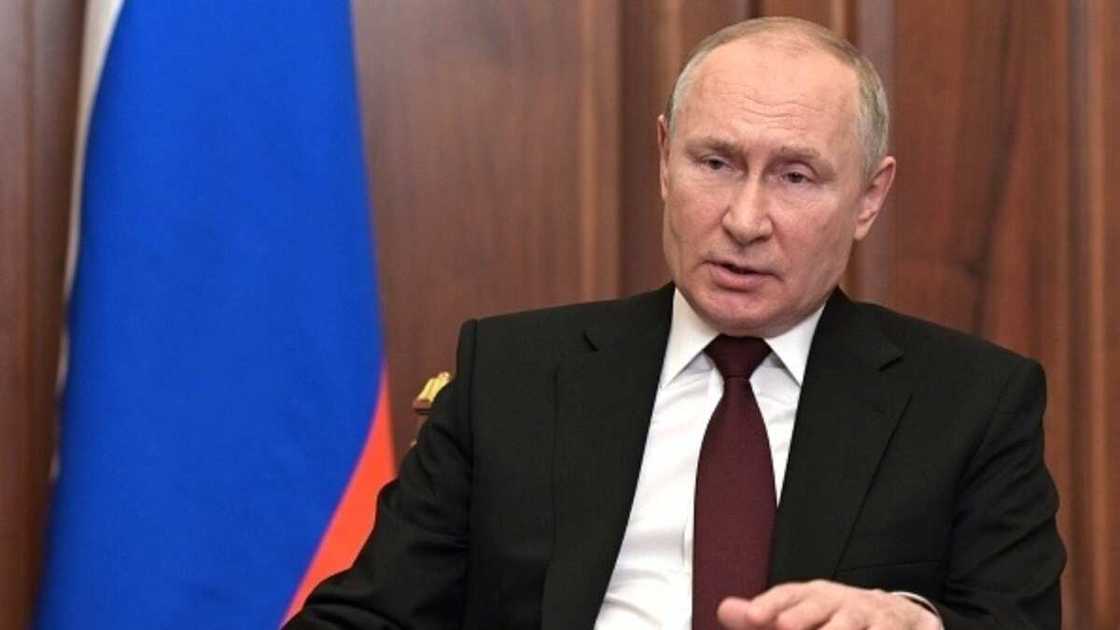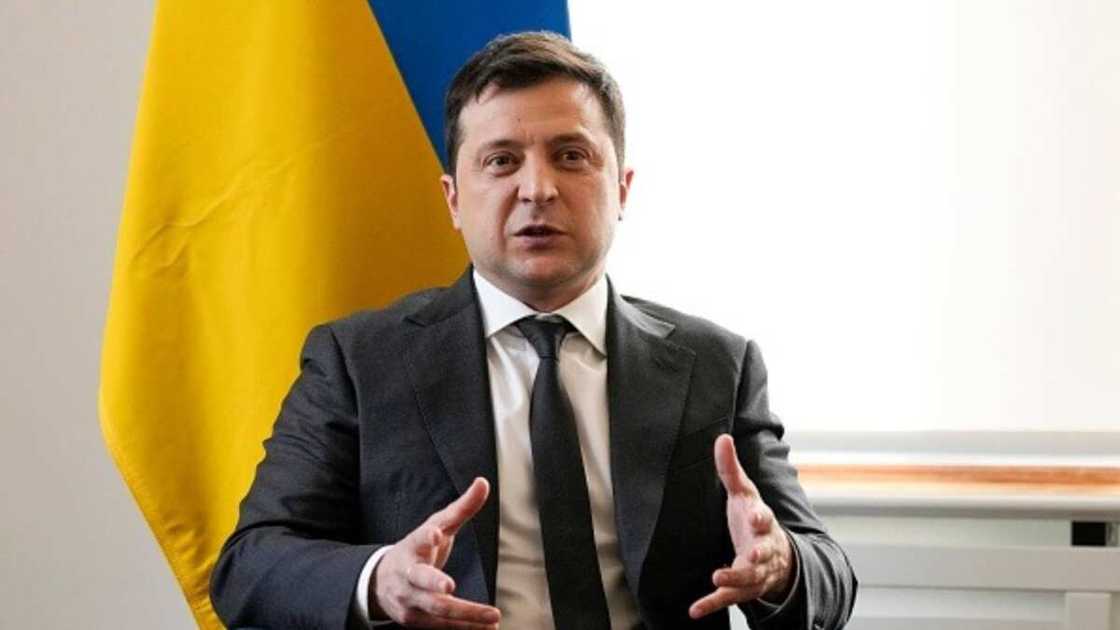Why Did Russia Invade Ukraine and What Does President Vladimir Putin Want?
Early Thursday, February 24, Dr Sunday Adelaja, a Nigerian pastor resident in Kyiv, Dr Sunday Adelaja, took to Facebook, urging Nigerians to pray for Ukraine.
PAY ATTENTION: Click “See First” under the “Following” tab to see Legit.ng News on your Facebook News Feed!
He also advised members of his church to stay calm even as he admits what was prayed against, the Russian invasion of Ukraine, was already happening.

Source: Getty Images
"We don't know to what extent this will reach, so I, as a senior pastor of the church, advise all brothers and sisters to remain calm, listen to the instructions given by government and authority," he posted on Facebook.
President Vladimir Putin in the early hours of Thursday, announced a military operation in eastern Ukraine’s Donbas region.
Ukraine's foreign minister Dmytro Kuleba shortly after confirmed that Russia has launched a full-scale invasion of Ukraine and is targeting cities with weapons strikes.
PAY ATTENTION: Join Legit.ng Telegram channel! Never miss important updates!
World leaders had cautioned Putin against invading Ukraine and threatened Russia with sanctions. But Moscow remains defiant.
Why is Russia invading Ukraine?
To understand the reason behind the Russian invasion, let's go a little bit into history.
Ukraine used to be part of the Russian empire for centuries before becoming a Soviet republic. It, however, won independence as the USSR broke up in 1991.
With its independence, Ukraine started making moves to shed its Russian imperial legacy and forge increasingly close ties with the West, according to Al Jazeera.
Fast forward to 2008, the North Atlantic Treaty Organization (NATO) promised Ukraine it would one day join the alliance.
NATO is an intergovernmental military alliance between 28 European countries and 2 North American countries. Its purpose is to guarantee the freedom and security of its members through political and military means.
Russia, however, is not comfortable with Ukraine's "romance" with the West.
Victor Yanukovich: Pro-Russian Ukrainian president emerges
Luckily for Moscow, in 2010, Viktor Yanukovich, a pro-Russian candidate, won Ukraine's presidential election.
By 2013, Yanukovich suspended trade and association talks with the European Union (EU) and opted to revive Ukraine's economic ties with Russia.
That move backfired; it led to mass protests in Kyiv that saw Yanukovich removed as the leader in 2014.
Russia was angry! In what appears a retaliatory move by Russia, armed men invaded the parliament of the Ukrainian region of Crimea and raised the Russian flag.
Russia also threw its weight behind a separatist rebellion that broke out in Ukraine’s east; also in 2014.
Petro Poroshenko: Ukrainian president with pro-Western agenda emerges
By May 2014, Russia's effort to maintain its grip on Ukraine failed as Petro Poroshenko won the presidential election, after Yanukovich's removal, with a pro-Western agenda.
Ukraine continued with its Western-leaning when in 2017, it sealed an association agreement with the EU.
The agreement opened markets for free trade of goods and services, and visa-free travel to the EU for Ukrainians.
In April 2019, Volodymyr Zelenskyy defeated Poroshenko to become Ukraine's president. He continued with the pro-Western leaning as he, in January 2021, appealed to President Joe Biden of the United States for Ukraine to join NATO.
Ukraine crossed the line!

Source: Getty Images
Russia could no longer tolerate Ukraine’s western leaning. By 2021, Moscow moved thousands of its troops to its border with Ukraine, sparking Western warnings of an imminent invasion.
Russia, however, denied planning to invade Ukraine. Nevertheless, despite his denial, Putin went on to recognise the independence of two separatist regions in Ukraine, Donetsk and Luhansk.
The move was believed to be Russia's calculated move to stage a military intervention against Ukraine, according to The New York Times.
Donetsk and Luhansk are situated in eastern Ukraine. They broke away from Kyiv’s control in 2014. However, the independence of the rebels was not recognised by the international community.
Ukraine's army and the rebels, which are backed by Russia, have been fighting since then, with more than 14,000 people reported killed. The Minsk agreement of 2015 aimed at restoring peace failed.
After recognising Donetsk and Luhansk as independent states, Russia ordered its troops there, saying it’s for peacekeeping, BBC News reported.
The US, however, did not buy Russia’s “peacekeeping” claim. It said the deployment of troops was Russia’s plot to create a pretext for war.
Amid the rising tension between Russia and Ukraine, there are intense diplomatic moves and threats of sanctions to avert an invasion.
However, Russia remained defiant and unbothered as it eventually invades Ukraine on Thursday.
Reliable media reports indicate that Russia has launched a devastating attack on Ukraine by air, land, and sea.
Russia-Ukraine war: What does Putin want?
Putin does not want Ukraine leaning towards the West. In specific terms, he listed his demands in a list of security guarantees that the West has to agree to in order to lower tensions in Europe, The Guardian UK reported.
Among the demands is that Ukraine must not be allowed to join NATO. He also wants any NATO drills near Russia’s border halted.
Putin also wants NATO to remove any troops or weapons deployed to countries that entered the alliance after 1997.
Those being indirectly referred to include Poland, the former Soviet countries of Estonia, Lithuania, Latvia, and the Balkan countries.
The demands were sent to the US in December 2021 while Putin offered the West an opportunity to engage in substantive talks on the issue.
He also added that Moscow would need not just verbal assurances but “legal guarantees”.
Perhaps not impressed with the West’s reactions, Putin decided has now decided to invade Ukraine.
The move has angered the West as many have announced sanctions on Russia.
Also, US president Biden said Putin’s real motive was beyond the demands he listed; it was to reestablish the former Soviet Union.
He said Putin's aggression against Ukraine will cost Russia dearly economically and strategically. Other world leaders have also decisively condemned Putin’s action.
Between Russia and the West, who will blink first? It remains to be seen!
Source: Legit.ng


